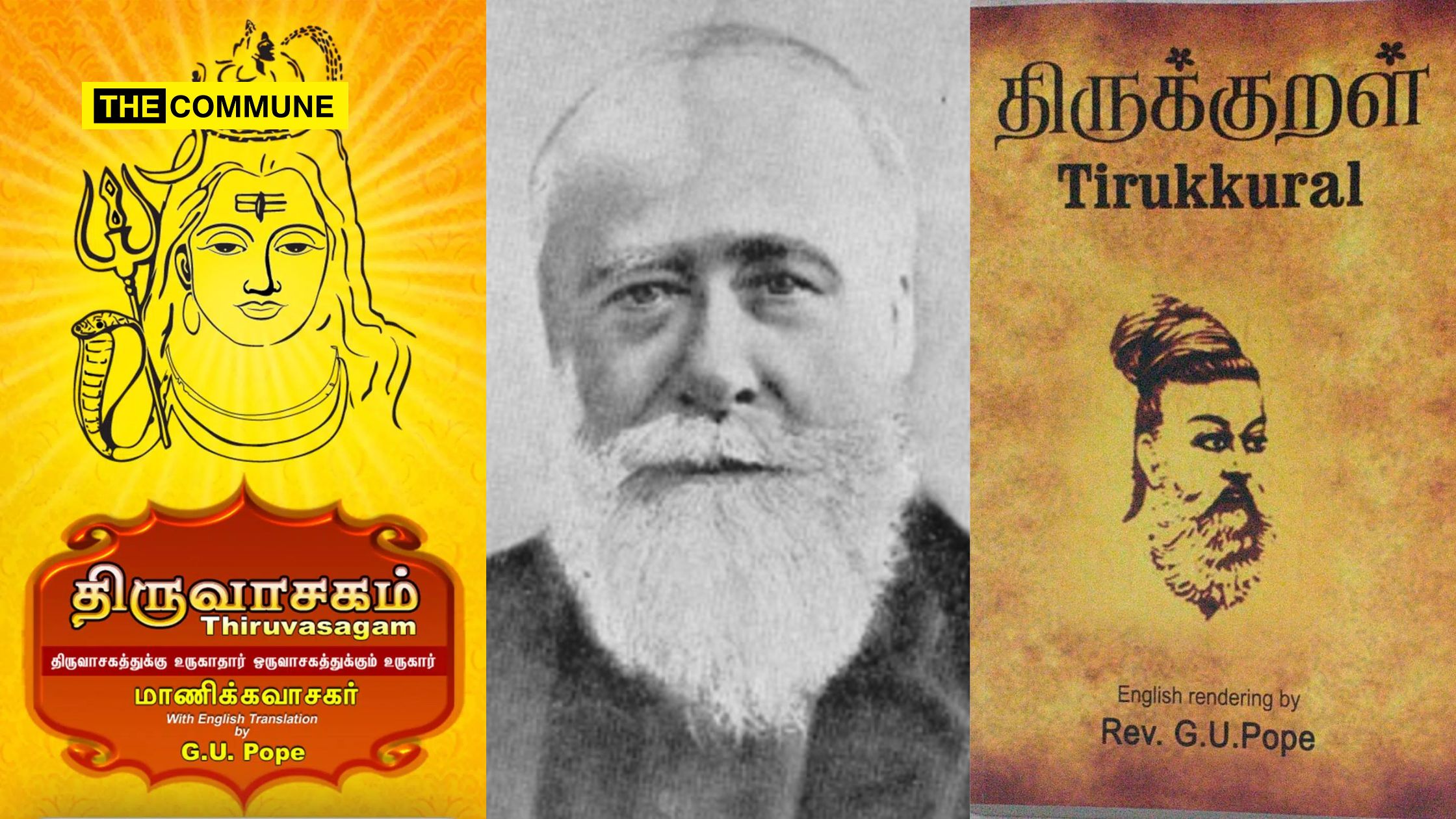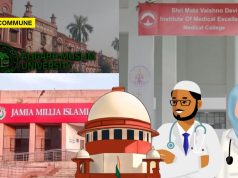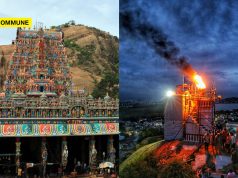
Tamil Nadu Governor R.N. Ravi had hit the nail on the head with precision, perfection and perspicuity when he remarked that G.U. Pope had de-spiritualised Thirukkural with the colonial objective of trivialising the spiritual wisdom of India, thus exposing the malicious motive of G.U. Pope and his missionary gang.
As expected there is an immediate hue and cry from the dravidian zealots, finding fault in the statement of the Governor. But, the bitter fact that had been glossed over is different.
Pope had played such dirty, despicable tricks driven by diabolical designs in a few more Tamil works also. Here is an instance.
Tiruvasagam
It is a volume of Tamil hymns composed by the ninth century Shaivite bhakti poet Manikkavasagar. It contains 51 compositions and constitutes the eighth volume of the Tirumurai, the sacred anthology of the Tamil Shaiva Siddhanta.
Thiruvasagam is the only work which is signed as well as written by God Siva Himself in Chidambaram temple when narrated by its author Manikkavasagar.
Manikkavasagar is a divine poet in direct communion with God Siva who had performed lot of miracles for him. Generally, in Bhakthi compositions, in order to assure that God, being an ocean of unbounded love to His devotees, will absolve even the worst sinner, provided he sincerely prays for His grace, the poet will empathise with the common man, assume his role and narrate as if he himself has indulged in such wrong doings. In fact, since the divine poet has surrendered his ego at the holy feet of God, he is never worried about the adverse comments from perverts like Pope!
Pope deliberately distorts the hymns titled Neeththal Vinnappam (Praying for Mukti), He explains: “God Siva presents himself before Sage Manikkavasagar in the Temple at Thiruthuraipoondi, blesses him and tells, “You embark on a yatra and finally come to my abode Kailash. Wherever you go, I will present myself before you as your guru”. The Sage embarks on his yatra and one day reaches the temple at Uttarakosamangai near Ramanathapuram. As he did not get the darshan of God Siva, he feels let down and unable to bear this parting, with mounting sorrow and emotion, sings a hymn earnestly praying for God’s appearance.”
Now, look at the profane postulate in the polluted mind of Pope:
“The serene and beautiful environment prevailing in Uttarakosamangai Temple was too ‘testing’ for Manikkavasagar to continue his sanyas. He also remembers his family life in Madurai, married to a beautiful woman, and the patronage which he received from the Pandya King. His retrospection of married life leads him to keep contact with the Deva Dasis serving the Temple. As he lost his control and crashed down from the higher level of sanyas, he developed a sort of complex, which created a guilty consciousness forcing him to sing this hymn.”
“From the evidence of these verses, we conclude that there were two things from which he suffered. One of these was the allurements of the female attendants of the temple. We have noticed this elsewhere, Hindu commentators will often find mystic meaning, which are harmless, if unfounded. Again and again in this and other poems he deplores the way in which he has been led to violate his vow. The other difficulty often referred to was the way in which mere ceremonial acts had to be performed, affording no relief to his conscience.”
By giving such a blasphemous introduction to this divine hymn, G.U. Pope not only insulted Sage Manikkavasagar and denigrated Thiruvasagam, but shocked the entire hindu society and hurt their religious sentiments.
In fact, one feels it is a sacrilege to repeat the venom that Pope has vomited even for the purpose of illustration.
Another instance where Pope deliberately insults Manikkavasagar: In Thiruvilaiyaadal Puranam that God Siva takes the blows from Pandya king’s flogging for the sake of Manikkavasagar, after which the king realises the sage’s greatness and appeals for pardon and later allows Manikkavasagar to leave Madurai for Thiruthuraippoondi. The invective inventive brain of Pope imagines it as under:
“As there was a conflict between Madurai and Chidambaram temples, Manikkavasagar left Madurai for Chidambaram and never returned to Madurai. He was afraid of going back to the Pandya king, who had not pardoned him for misappropriating the money given by the king for the purchase of horses. So, he never got back to Madurai.”
Any credit legitimately due to Manikkavasagar, Pope cunningly, shamelessly misappropriates to christian saints. He says, ‘“In the whole legendary history of this sage … there stands out a real historical character, which seems to be a mixture of that of St. Paul and of St. Francis of Assisi. Under other circumstances what an apostle of the East might have become,”
G.U. Pope wrote the translation of major portion of Thiruvasagam staying in a town called Lugano in Italy, wherein he used to regularly visit the St. Maria degili Angioli Church to have the needed diversion, relaxation and a sort of rejuvenation by seeing the paintings of Bernardinao Luini. He has also recorded that he always used to feel the presence of Sage Manikkavasagar beside him kneeling down and praying to Jesus. Pope avers that the Sage must have been a follower of Jesus until the time of his (Jesus) going to Heaven, which must be the only reason behind the feeling of great devotion found in his work. He also says that, he believed Manikkavasagar, Mylapore’s Handloom worker (Thiruvalluvar) who wrote Thirukkural and the Nomad Gnanis (Jain Sages) who wrote Naaladiyar and others who have freed themselves from the flesh must have certainly visited this Church and realized themselves through the history of Jesus and Christian thoughts.
There is another concocted story about G.U. Pope in Tamil Nadu which says that Pope wanted the statement, “Ingu oru Thamizh Maanavan urangukiraan” (A Tamil student is sleeping here) sculpted on his grave stone in his native place and that the statement is still present there on his grave. But those who have gone to the cemetery have confirmed that there was no such statement written on his grave.
The Christian-Dravidian Nexus
The Aryan-Dravidian Racist Theory propounded by the Christian Padres and the British Government came in handy for the stalwarts of Dravidian Movement to call for a separate Tamil Nation. For all Dravidian racist leaders like EVR, Annadurai and Karunanidhi, Robert Caldwell was (and is) a “God;” they utilized his false Dravidian theories to the hilt calling for a separate Tamil Nation.
“Tamil Separatism” is a Christian agenda and the Church has a long term plan of forming a Tamil Christian Nation with Tamil Nadu and North and East Sri Lanka. With this objective, the Church supported the LTTE and its Tamil Eelam demand. Dravidian racist leaders’ chauvinistic campaign against “Aryan-Brahmins”, well supported by the Church, helped them to capture power in Tamil Nadu in 1967.
In the five decades of Dravidian rule, one can find a clear nexus between the Church and the ruling party. No wonder the Dravidian government glorified the above said Christian Missionaries by installing statues for them along the Marina beach. Whether it is fixing of Thiruvalluvar’s Birth Anniversary or shifting of Tamil New Year to January (near to Christmas), or ‘secularising’ the Hindu Festival of Pongal, one can always find a Christian push behind such Dravidian acts.
Click here to subscribe to The Commune on Telegram and get the best stories of the day delivered to you personally.




